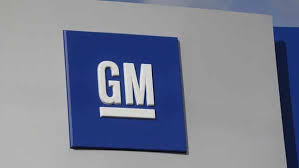
Cruise, the autonomous driving division of General Motors, has developed its own chips for self-driving cars that will be deployed by 2025 in order to reduce costs and scale up volume, according to executives of the company.
Cruise is following in Tesla's footsteps by switching from Nvidia Corp's products to customized chips to power their vehicles.
"Two years ago, we were paying a lot of money for a GPU from a famous vendor," Carl Jenkins, head of Cruise hardware, told Reuters in an apparent reference to Nvidia, a leading maker of graphics processing units, or GPUs.
"There is no negotiation because we're tiny volume. We couldn't negotiate at all. So that's why I said, okay, then we have to take control of our own destiny," he said during a tour of the Cruise R&D workshop in San Francisco.
For the first time this week, Cruise executives revealed details about the custom chips that will power its Origin vehicle, which will have no pedals or steering wheel.
Jenkins stated that while in-house chip development required investments, these would be recouped by increasing production of cars that use multiple chips. He refused to say how much money the company was putting into the project.
According to Cruise CEO Kyle Vogt, the custom chips will help the Origin "hit that sweet spot from a cost perspective" in 2025, and personal ownership of autonomous vehicles will be viable from that point forward. This comes after GM CEO Mary Barra stated earlier this year that the company would develop a "personal autonomous vehicle" by the middle of the decade.
Cruise had so far developed four in-house chips: Horta, the main brains of the car, Dune, which processes data from sensors, a chip for the radar, and one that would be announced later, according to Jenkins.
The sensors and computing chips would also help to reduce power consumption, increasing driving range.
According to Gartner chip analyst Gaurav Gupta, automakers are increasingly attempting to design chips and systems in-house in order to gain greater control over product development and supply chains.
"Will they be successful or not is a different question as it isn’t easy," he said.
According to Ann Gui, Cruise's silicon lead, the Horta chip is based on an ARM processor because that is what was available when chip development began two years ago.
"But we are closely looking at RISC-V because they're open source and it has a lot of benefits," she said. ARM and RISC-V are rival instruction set architectures, a base for building chips that defines what kind of software can run on the chips.
Gui stated that the automaker was collaborating with an unidentified Asian chip maker to mass-produce its custom chips.
(Source:www.usnews.com)
Cruise is following in Tesla's footsteps by switching from Nvidia Corp's products to customized chips to power their vehicles.
"Two years ago, we were paying a lot of money for a GPU from a famous vendor," Carl Jenkins, head of Cruise hardware, told Reuters in an apparent reference to Nvidia, a leading maker of graphics processing units, or GPUs.
"There is no negotiation because we're tiny volume. We couldn't negotiate at all. So that's why I said, okay, then we have to take control of our own destiny," he said during a tour of the Cruise R&D workshop in San Francisco.
For the first time this week, Cruise executives revealed details about the custom chips that will power its Origin vehicle, which will have no pedals or steering wheel.
Jenkins stated that while in-house chip development required investments, these would be recouped by increasing production of cars that use multiple chips. He refused to say how much money the company was putting into the project.
According to Cruise CEO Kyle Vogt, the custom chips will help the Origin "hit that sweet spot from a cost perspective" in 2025, and personal ownership of autonomous vehicles will be viable from that point forward. This comes after GM CEO Mary Barra stated earlier this year that the company would develop a "personal autonomous vehicle" by the middle of the decade.
Cruise had so far developed four in-house chips: Horta, the main brains of the car, Dune, which processes data from sensors, a chip for the radar, and one that would be announced later, according to Jenkins.
The sensors and computing chips would also help to reduce power consumption, increasing driving range.
According to Gartner chip analyst Gaurav Gupta, automakers are increasingly attempting to design chips and systems in-house in order to gain greater control over product development and supply chains.
"Will they be successful or not is a different question as it isn’t easy," he said.
According to Ann Gui, Cruise's silicon lead, the Horta chip is based on an ARM processor because that is what was available when chip development began two years ago.
"But we are closely looking at RISC-V because they're open source and it has a lot of benefits," she said. ARM and RISC-V are rival instruction set architectures, a base for building chips that defines what kind of software can run on the chips.
Gui stated that the automaker was collaborating with an unidentified Asian chip maker to mass-produce its custom chips.
(Source:www.usnews.com)














